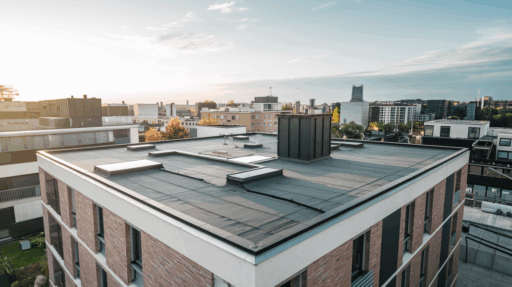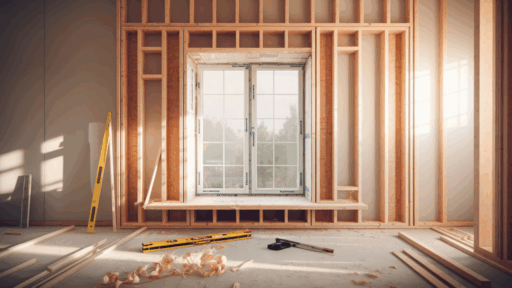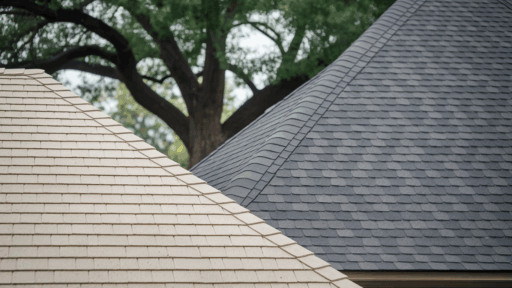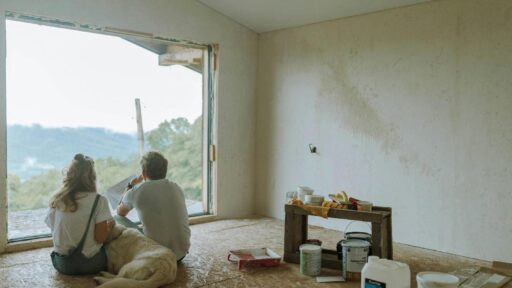Flat roofs are showing up more and more in today’s homes.
I’ve seen them on sleek modern builds, small home additions, and even in some classic designs that want a cleaner, low-profile look.
They definitely stand out, and they can look amazing, but before you jump in, it’s worth knowing the full picture.
In this blog, I’ll walk you through the real pros and cons of flat roofs.
I’ll share what makes them appealing, where they might cause trouble, and how to determine if a flat roof is a good fit for your home, climate, and lifestyle.
If you’ve been Googling things like:
- Should I get a flat roof?
- Flat roof problems
- Is a flat roof better than a pitched roof?
Then you’re in the right place. I’m here to give you clear, honest answers based on real experience, not hype. Let’s get into it.
What Is a Flat Roof?
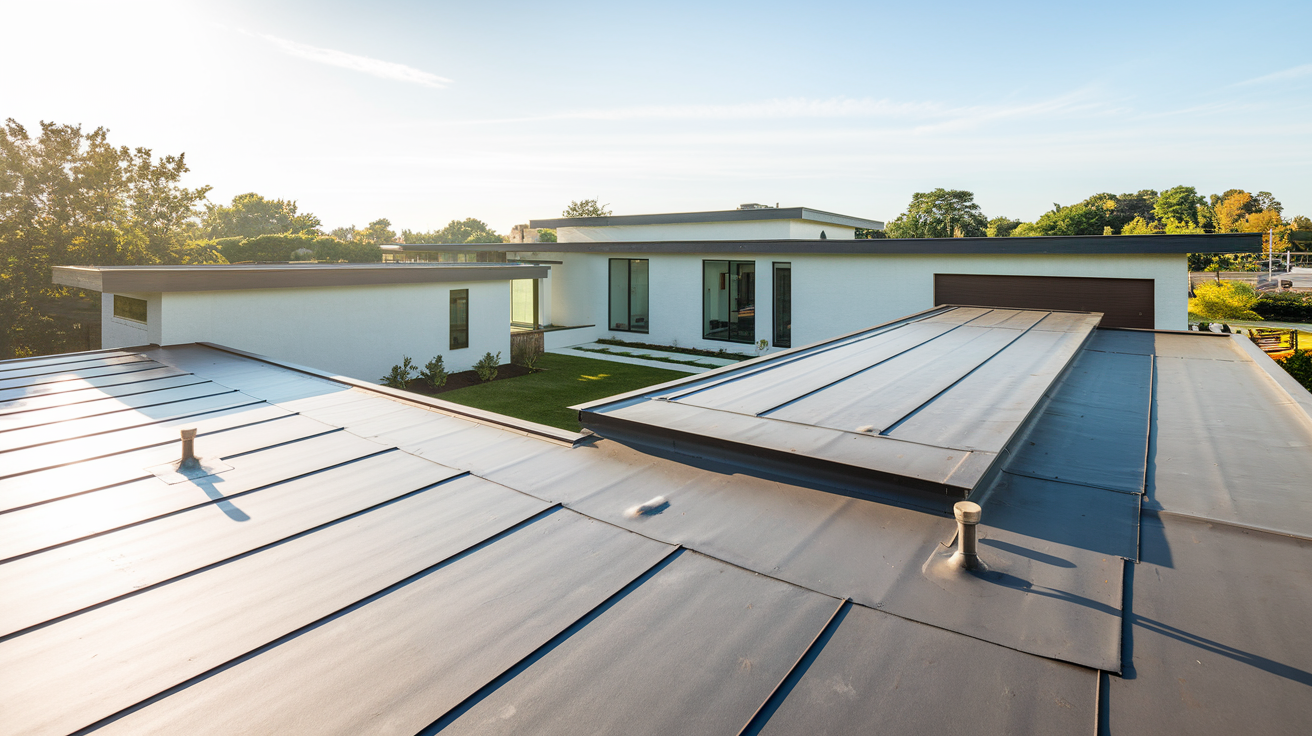
Let me keep it simple. A flat roof isn’t completely flat. That surprised me at first, too.
It has a very low slope, usually less than 10 degrees. That’s just enough for water to run off slowly instead of pooling.
You won’t see a steep peak like on a regular roof. It’s flat-looking, but not perfectly level.
Now, let’s talk materials. If you choose a flat roof, you’ll hear names like:
- EPDM (a rubber membrane)
- TPO (white and reflective)
- PVC (strong and waterproof)
- Modified bitumen (feels like asphalt with layers)
Each one has its use, and your roofer will probably recommend based on your climate, budget, and layout.
Flat roofs aren’t just for office buildings anymore. I used to think they were only for stores or warehouses. But now, they’re popping up on homes, garages, and backyard studios too.
Flat roofs are no longer just practical, they’re a style choice.
Advantages of a Flat Roof
When I first looked into flat roofs, I wasn’t sure what to expect. But the more I learned, the more I saw the upsides. You might be surprised, too.
1. Cost-Effective Installation
A flat roof can save you a significant amount. You’re looking at less materialand less laborthan a steep, angled roof. The design is simpler.
And because of that, the job gets done faster. Less time, less hassle. Fewer people are climbing around.
2. Extra Space You Can Actually Use
Flat roofs don’t just sit there. You can do something with them. Think a rooftop garden, a chill patio, or even solar panels.
If you live in a tight city spot with no yard, this space matters. It gives you options. Real, usable space, on top of your home.
3. Easy to Reach, Easy to Fix
Something I didn’t think about until I needed to clean out a gutter: Flat roofs are easier to walk on.
That means safer inspections, faster fixes, and less stress. You don’t need a pro for every little thing. I like knowing I can get up there safely if I have to.
4. Looks That Match Modern Style
Flat roofs have a clean, sharp look. If you’re into modern or minimalist design, they just fit. They give your home a sleek edge.
They look different, in a good way. More builders are adopting this approach because the style is in vogue. It’s not just about function anymore. It’s about curb appeal, too.
5. Energy Smarts Built In
You can make a flat roof work harder for your home. Add a reflective coatingto keep heat out. Install a green roofwith plants that help insulate.
These small upgrades can cut energy billsand keep your house more comfortable. Flat roofs open the door for smart energy choices.
A flat roof might be more than just a roof. It can be a smart, stylish, and practical part of your home.
Disadvantages of Flat Roofs
Let’s be real, flat roofs aren’t perfect. They’ve got some issues you should know about before jumping in. I’m not here to talk you out of it, to help you make a smart call.
1. Drainage Isn’t Its Strong Suit
Flat roofs don’t drain water as effectively aspitched ones do. That low slope means water sticks around longer.
If your drainage system isn’t working right, you’re looking at pools of waterjust sitting there. Over time, that can lead to leaks.
And I’ll be honest, I’ve seen it happen. A small puddle today can turn into a nasty ceiling driptomorrow.
2. They Don’t Last Forever
Most flat roofs typically last between 10 and15 years. That’s shorterthan what you’d get with a sloped roof.
The materials wear down quicker. You might need repairs more often, or even a full replacement sooner than you’d like.
I’ve had to patch mine twice already, and it’s only been 8 years.
3. Weather Can Be a Problem
If you live in an area that experiences heavy rainfall or snowfall, a flat roof maystruggle.
Heavy snow builds up fastand doesn’t slide off easily. That puts pressure on the roof and can lead to damage or saggingif it is not cleared.
I learned that the hard way after a rough winter. Snow sat too long, and I had to call in help.
4. You Get Fewer Material Choices
Here’s something you might not expect: there aren’t many roofing materials made for flat roofs.
You’re mostly working with rubber, plastic-like layers, or asphalt blends.
Some of these can be pricey, and not all are equally strong. If you’re hoping for shingles or tile, flat roofs won’t give you that.
5. Maintenance Adds Up Over Time
You’ll need to check it regularly, even if nothing appears to bewrong. Flat roofs are sneaky like that.
Let a small issue slide? It can get worse, fast. And fixing it later usually means more time and more money.
Trust me, I’ve had one tiny crack turn into a weekend project I didn’t plan for.
Flat roofs can work well, but only if you’re aware of what they need. If you’re okay with some extra upkeep, they can still be a solid choice. Just go in with open eyes.
Flat Roof vs. Pitched Roof: Comparison
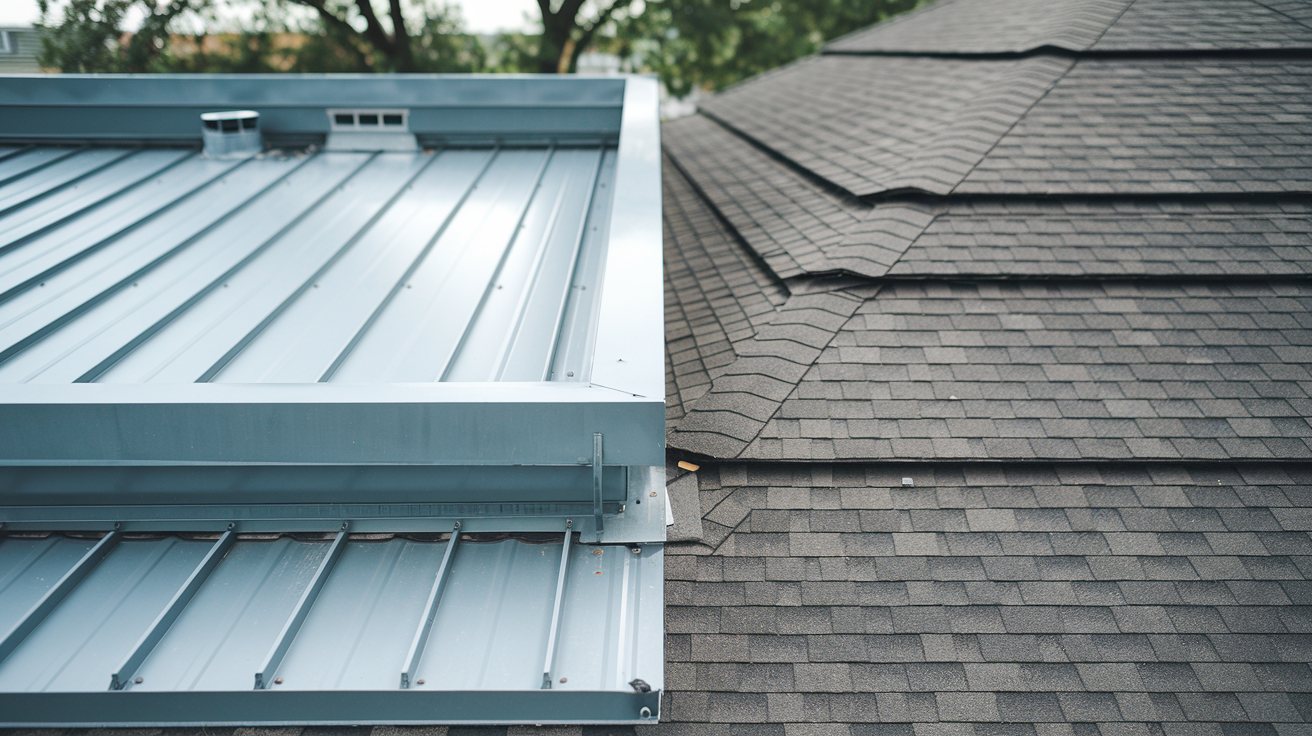
When I was deciding on a roof, I didn’t realize how different flat and pitched roofs really are. It’s not just about looks. It’s about how they handle weather, how long they last, and how much they cost to care for.
A quick table to help you see how flat and pitched roofs stack up:
| Feature | Flat Roof | Pitched Roof |
|---|---|---|
| Cost to Install | Lower upfront cost | Higher due to framing and materials |
| Durability | 10–15 years on average | 20–50+ years, depending on the material |
| Maintenance | Needs more frequent checks | Less frequent, but harder to access |
| Drainage | Poor water can pool | Good—water runs off easily |
| Aesthetics | Modern, minimalist look | Traditional, varied styles |
| Material Choices | Limited (EPDM, TPO, etc.) | Wide range (shingles, metal, tile, etc.) |
| Climate Fit | Best for dry or mild areas | Handles rain and snow much better |
| Usable Space | Can add a deck or solar panels | Usually not usable |
This is what I’d say after doing my homework and living with one:
- Live in a dry or warm area?A flat roof might be just fine and cheaper to install.
- See lots of rain or snow?Go with a pitched roof. It handles theweather better.
- Love modern design?Flat roofs fit that style better.
- Need a long-term roof with fewer repairs?Pitched roofs win in durability.
Consider your climate, home style, and budget. One isn’t better than the other; itjust depends on what works best for your situation. And don’t forget: maintenance is part of the deal either way.
Is a Flat Roof Right for Your Home?
Flat roofs can be a great choice, but only if they fit your needs. In areas with heavy rainfall or snow, they may require more maintenance since water doesn’t drain as quickly.
In dry or warm climates, though, they’re affordable and practical. One significant advantage is the extra space, which you can utilize for a patio, garden, solar panels, or even storage.
If you don’t plan to use the space, that perk might not matter much. Style also plays a role. Flat roofs look great on modern homes but may not complement a more traditional style.
I also recommend consulting with a roofing professional. I did, and it helped a lot; they checked my layout, explained my options, and helped me avoid mistakes.
In the end, it’s about where you live, how you’ll use the space, how it looks in your home, and getting advice from someone who knows roofs inside and out.
Conclusion
Flat roofs come with their own set of pros and cons. On the plus side, they’re affordable, offer usable space, and give your home a modern look.
However, they also require more maintenance, may not withstand adverse weather conditions well, and don’t last as long as pitched roofs.
So, is a flat roof right for you? That depends on where you live, how you plan to use the space, and the overall appearance of your home.
Take your time. Consider your needs, budget, and climate. And don’t be afraid to consult with a roofing expert before making a final decision. A little guidance can go a long way.
Ultimately, the best roof is one that suits your home and accommodates your lifestyle. Make your decision with care, and you’ll be glad you did.

